I am a sucker for beauty. Even more: I would say that my sense of aesthetics is one of the strongest drivers of my way of seeing and interacting with the world, to the extent that I list beauty as one of my core values. I appreciate beauty in what I see, what I hear, what I smell, what I taste, what I read...even in the character of the people around me. But in this essay, I want to focus exclusively on the visual. My love of seeing beauty around me goes a long way toward explaining why I have ended up living here in Portugal in general, and in Lisbon in particular.
And yet, I have found that frequently, when I call something beautiful, not everyone agrees. In the essay “The Beauty of Elsewhere, the Beauty of Home”, I introduced the term non-canonical beauty, which I invented for my own use but want to share with you. Here, I would like to explore this term and take you on a tour of all of the kinds of beauty I find myself surrounded by. My hope is that this just might provoke a change for the better in the way you perceive your own environment.
What is beauty?
In “The Beauty of Elsewhere, the Beauty of Home”, to which this essay is really a companion piece, I proposed this definition: We experience beauty when a sensory impression thrills us intellectually. In other words, beauty is inherently intellectual rather than emotional. Certainly, we can experience strong emotions as a result of witnessing beauty, but I would argue that these emotions are produced by the intellectual reaction, not the other way around. In this sense, beauty is like humor: We “get” the joke first, and then we laugh.
Or sometimes we don’t laugh. Not everyone has the same sense of humor. Equally, not everyone has the same sense of beauty. The most important point made in “The Beauty of Elsewhere, the Beauty of Home” is this: Beauty does not inhere in a thing—beauty is an experience of a thing. There is no device like a geiger counter that we could walk around with, detecting levels of beauty in our environment. Something is beautiful only if we see it as beautiful.
Canonical beauty
If we are going to talk about non-canonical beauty, then we need to start with canonical beauty.1 Before we try to define this, let’s start with a few tests. Say you have taken a picture of something. We could ask the following questions:
If you put the image on a postcard, would it be likely to sell?
Does it resemble the images you find in ready-made frames in a frame shop?
Does it look like something you might see on Pinterest or Instagram?
Certain things are sure-fire winners as subjects of canonically beautiful images: sunsets, flowers, trees, children, fruit, bicycles, happy couples, beaches, mountain vistas, and Audrey Hepburn. What do these things have in common? I have come up with the following list of elements:
a distinct subject
a familiar subject
order and symmetry
natural forms
positive symbolism
evocation of simple emotions
In other words, if we like this picture of a tree, it is because we understand what the picture is of; because we recognize it as a tree; because we are pleased by the orderly composition of the image, with equal amounts of negative space on both sides; because we react positively to forms of nature and see trees (especially palms) as having positive symbolic value; and because the aggregate of all of this makes us feel cheerful.
So... tree—yay!
Now, I like trees too, and I took that photo myself. But I also took this one, which I like even more:
This is also of a tree, but in this case, it is a close-up of a pine tree that has been felled by a storm. I think that it’s recognizably wood, but from a distance, it could look like a desert landscape. I find it beautiful, despite the fact that it doesn’t trigger many immediate associations or positive feelings.
Here are some more images that I would say are within the realm of the canonically beautiful—assuming, of course, that one finds them beautiful at all. (Note that in each of these image galleries, you can click on the individual photos to view them in their entirety, if you are using a web browser.)
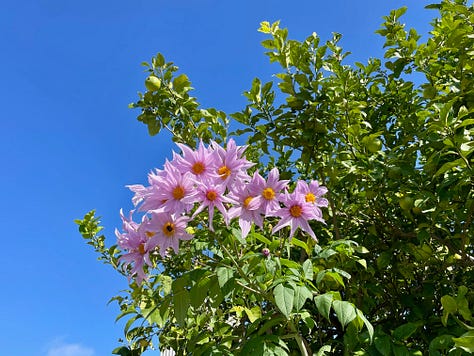
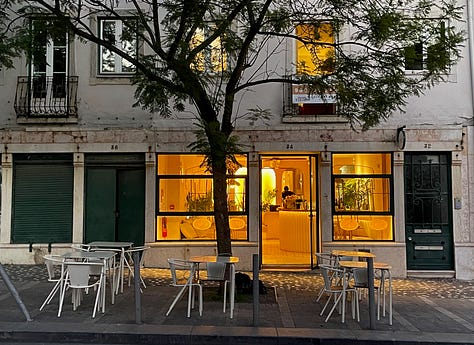
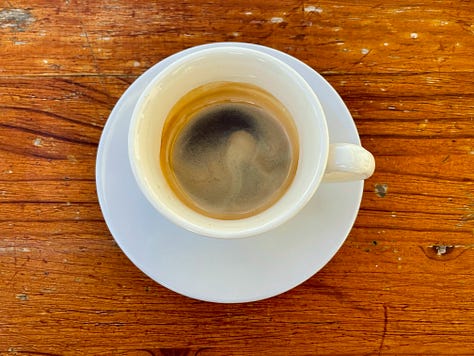
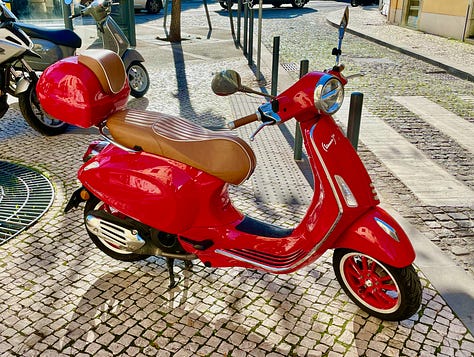
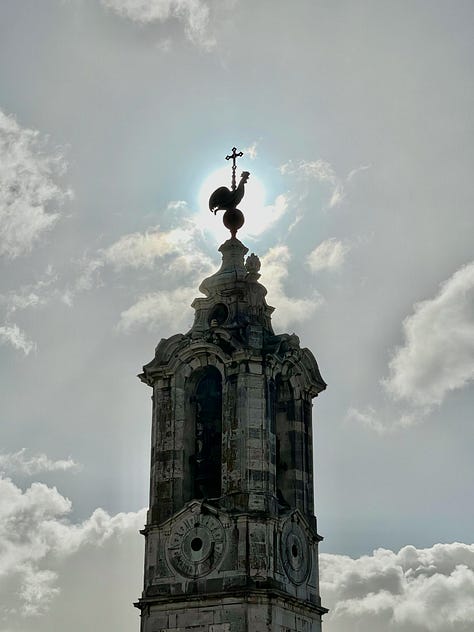
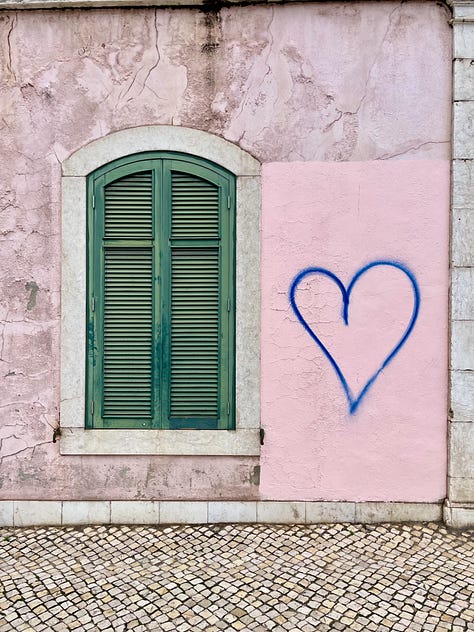
So, having met canonical beauty, let’s go talk to its ugly cousin.
Non-canonical beauty
If I create an image (let’s stick to photography, since that’s the medium I’m using to illustrate this piece) and I find it to be beautiful despite lacking some or all of the traits listed above, I label it as an example of non-canonical beauty. Clearly, then, there are other aspects to beauty besides those traits. Indeed, I find that non-canonical images feature many of the same elements that make canonical ones beautiful, such as light, color, texture, and composition. The difference is that in the non-canonical cases, either something is lacking (such as a distinct subject) or something is present that makes the image unusual.
Wanting to understand what the elements of non-canonical beauty were, I performed an experiment: I went through my photos from the past six months and selected 500 images that I would label as non-canonically beautiful. Then I subjected these to a qualitative analysis (because: former academic), which resulted in the emergence of seven features, which I will call the seven elements of non-canonical beauty:
light and color
texture
pattern
composition
disorder or chaos
ambiguity, disorientation, or juxtaposition
evocation of complex emotions
The first few of these are also important elements of canonical images, but as we progress down the list, we find aspects that are in somewhat in conflict with the themes of canonical images.
I think it’s time for a caveat: I am well aware that I am not proposing a revolutionary analysis of art. In fact, much of my own love of non-canonical beauty comes from a longstanding appreciation of modernist art. The modernists were among the first to liberate the work of art from its social function and to allow the image to speak for itself, without necessarily symbolizing anything. If anyone were to compare my photos to those of Paul Strand, Edward Weston, or André Kertész, I would be immeasurably flattered. This is just to say that I know that the ideas I am presenting are not revolutionary; I am merely sharing my own thoughts on beauty with friends. (Though I do encourage the photographers and art critics in the community to contribute their perspectives.)
Rather than writing much more, I would like to use some images to show you what I mean. Allow me to take you on a tour through the seven elements of non-canonical beauty, featuring images made here in Lisbon.
A tour of the seven elements
Almost every image that counts as non-canonically beautiful represents several of these elements at the same time, but it is often the case that one stands in the forefront. Here are some images that exemplify the seven elements listed above.
Light and color
I am in love with the colors of Lisbon: the many blues of the sky, the pastel colors of house facades, the fading paint of doors, the color-bombs of lemons and oranges. I find that in every season, the light lends itself to delicious images—sometimes intense, sometimes delicate.
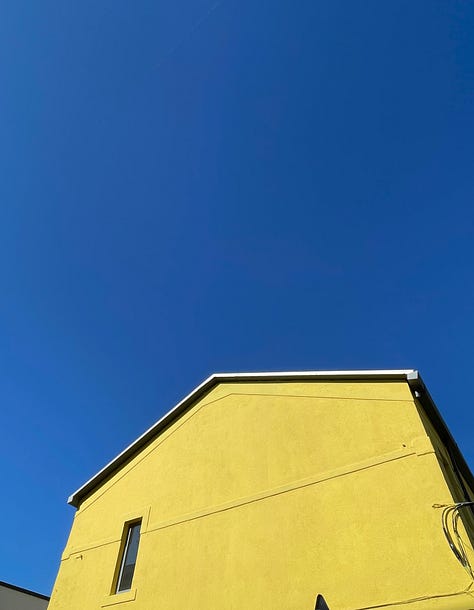
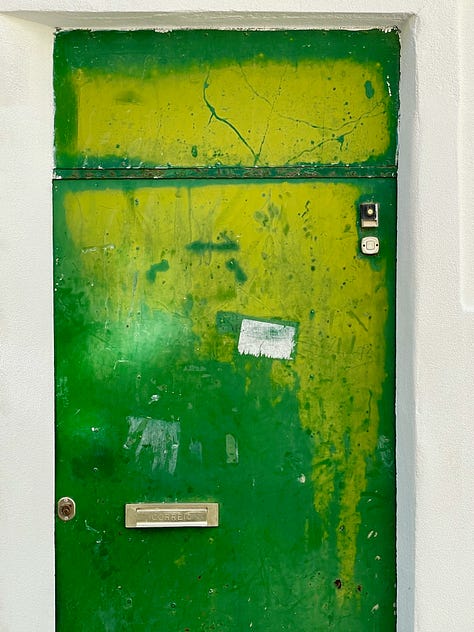
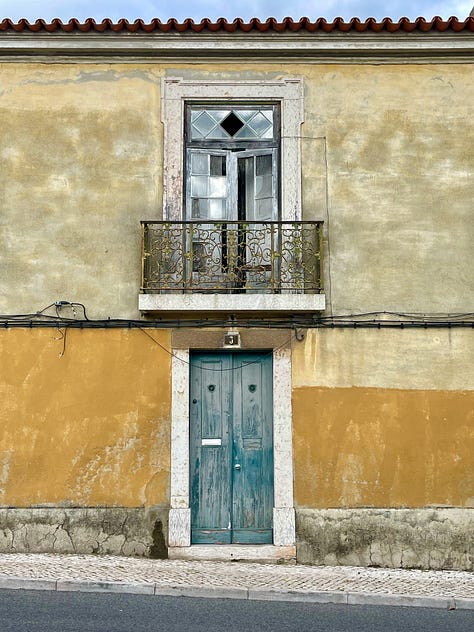
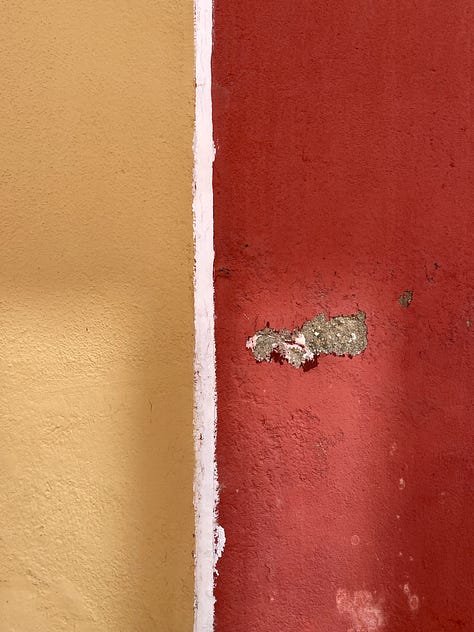
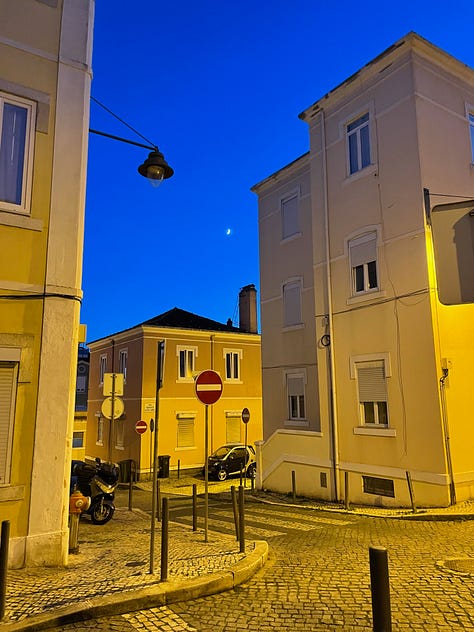

One of my favorite things about the colors of Lisbon is the fact that so many objects (houses, sidewalks, lampposts, etc.) are not well cared for, and as a consequence the effects of weather and decay create a seemingly infinite range of subtleties in color.
Texture
Another favor that the light does here—often in collaboration with decay—is to create a wealth of textures that we can sink our eyes into.
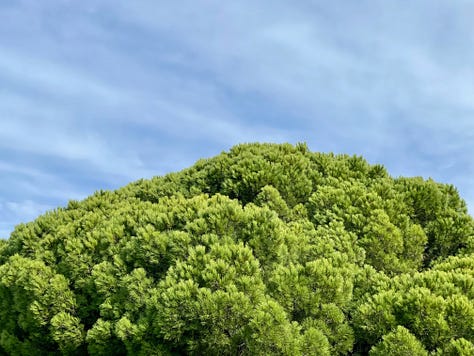
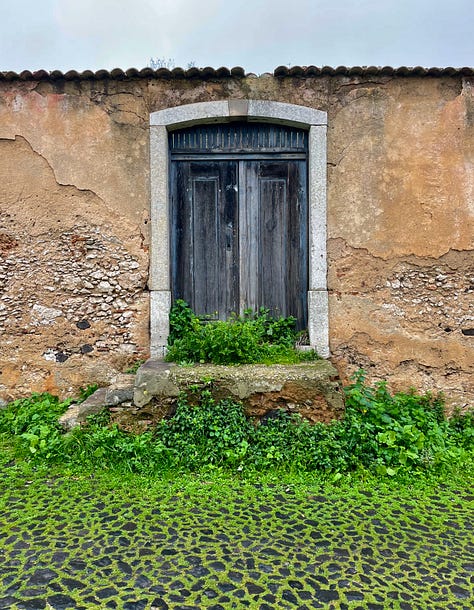
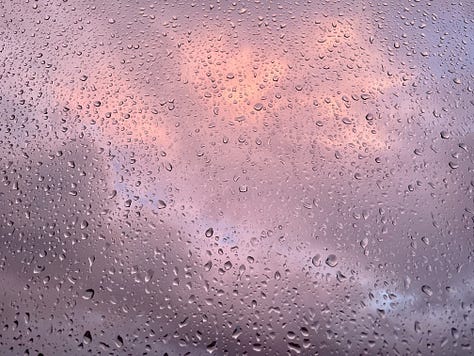
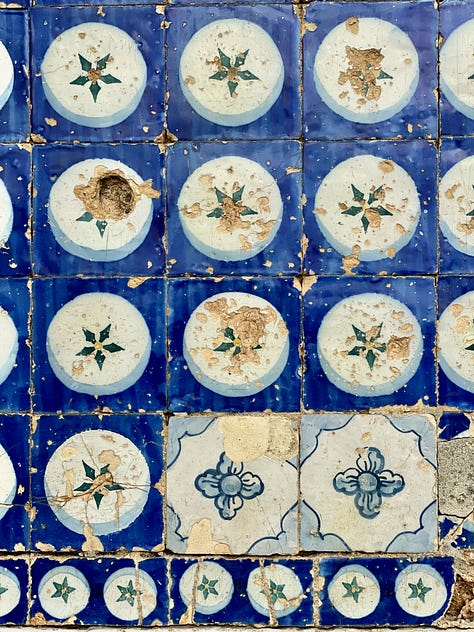
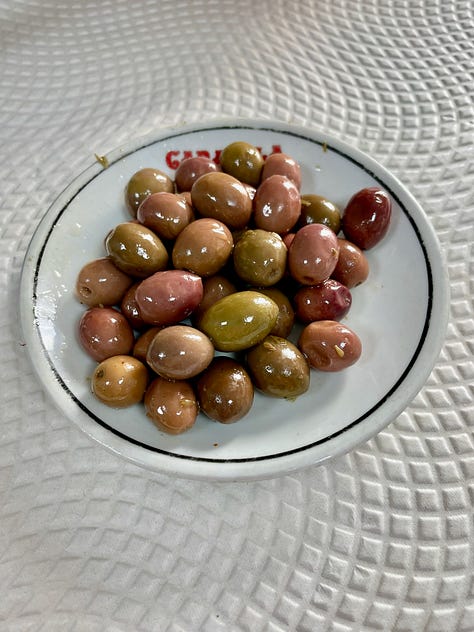
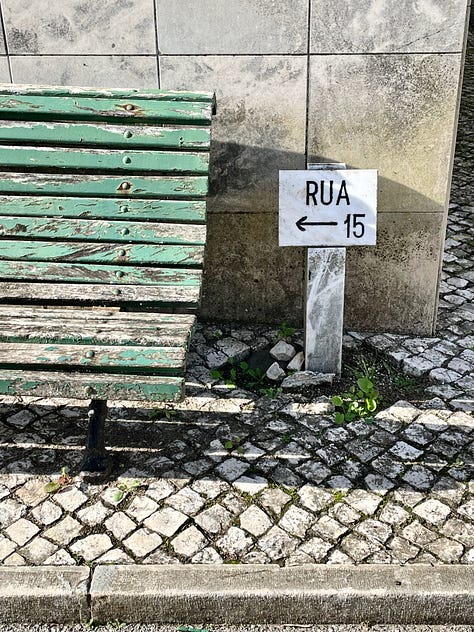
Sometimes I find myself looking at an image and flexing my fingers, as though I were going to pet it. I mean, look at that pine!
Pattern
One of the great liberations I have experienced in my appreciation of beauty is the realization that if you focus just on lines, just on the shape of things, you can find beauty no matter what the subject is. In this sense, corrugated steel can be as beautiful as a bouquet of flowers, at least to me.
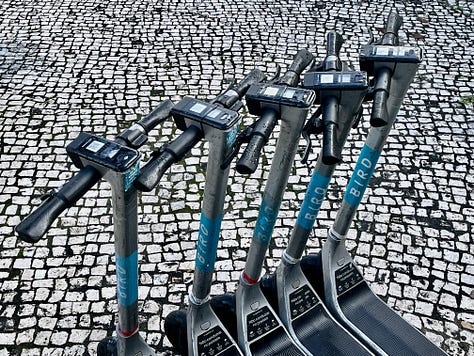
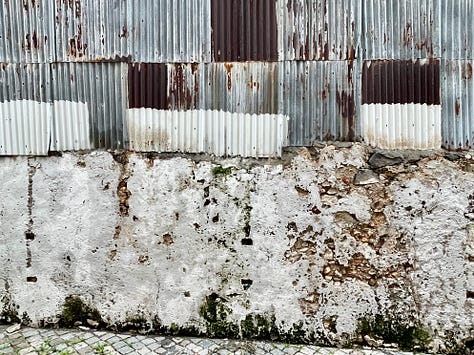
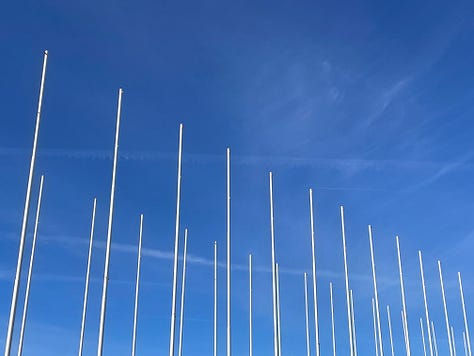
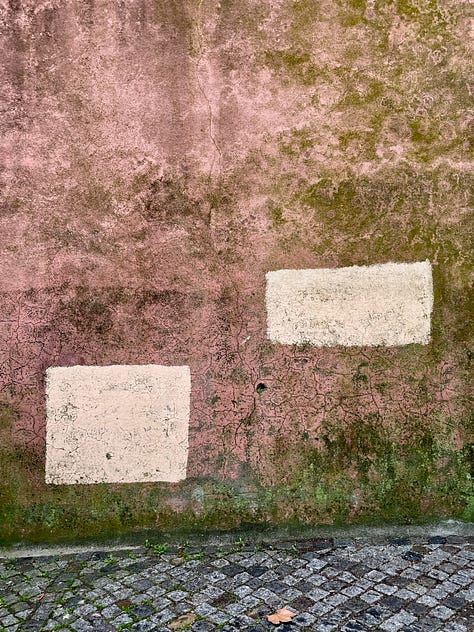
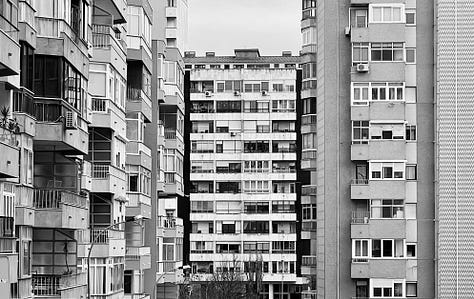
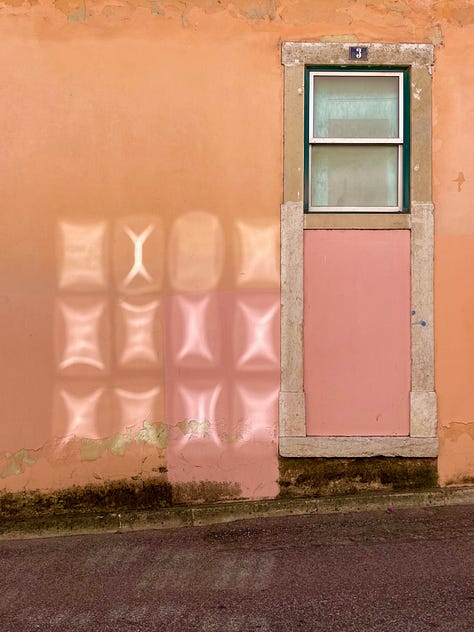
I said to
in a recent interview I did on A Foreign Perspective that I am afraid the locals here in Ajuda think of me as “that crazy guy who photographs walls”. But I swear to you, once you really start looking at the walls here, it’s like living in a Rothko factory.Composition
Related to pattern is one of my favorite parts of photography: choosing what goes in the picture and what doesn’t—that’s a very simple definition of composition. I am a sucker for buildings, especially rooflines, which can be made to play nicely with sky, clouds, and moon.
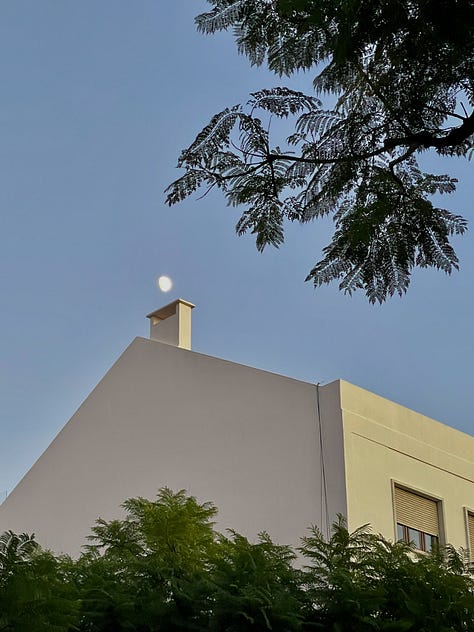
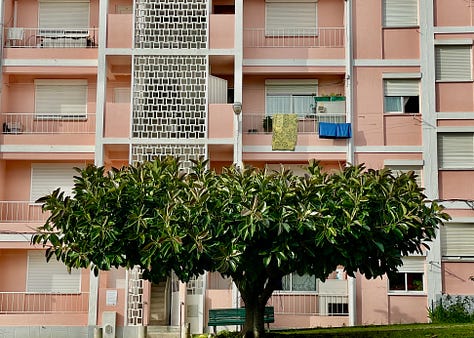
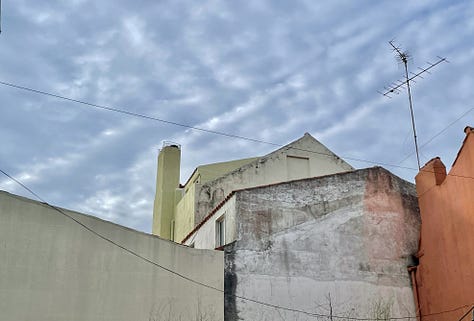
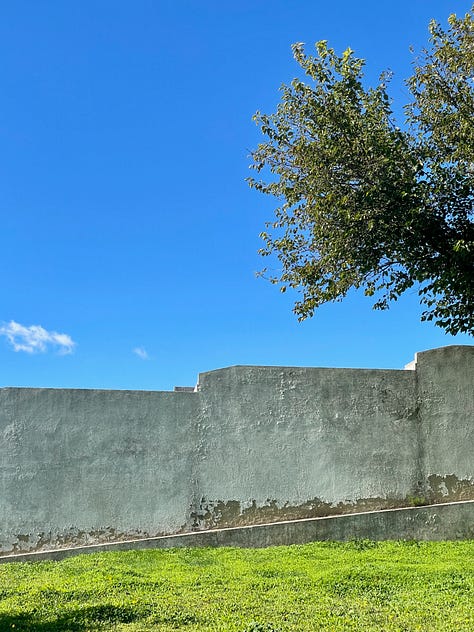
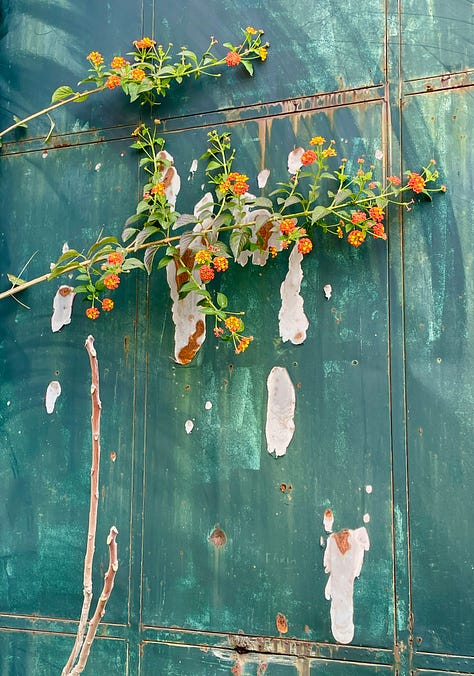
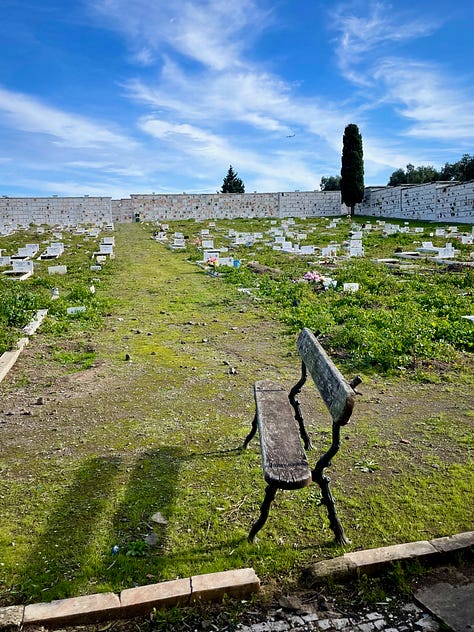
Sometimes I enjoy using standard guidelines for composition, such as the “rule of thirds”, but sometimes it can also be fun to break the rules and create more tension.
Disorder or chaos
Speaking of tension, we now arrive at the elements of non-canonical beauty that deal with the identity or symbolic value of the subject. I can easily find images beautiful that represent disorder, decay, or chaos—even though these are not likely to find their way onto postcards any time soon.
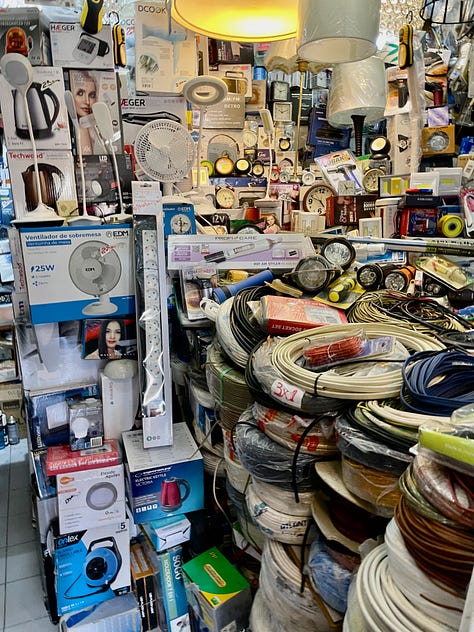
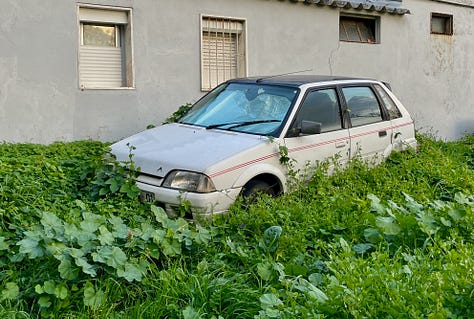


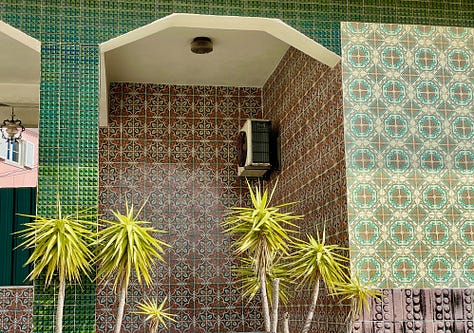
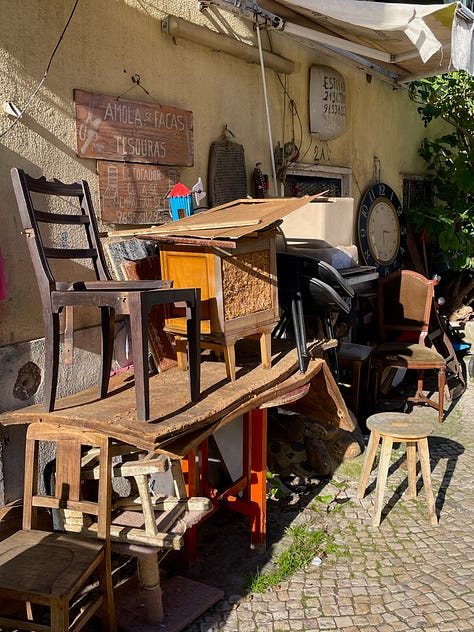
Clearly, the representation of disorder can be balanced by the presence of color, pattern, etc. Many images work because of the marriage of these elements.
Ambiguity, disorientation, or juxtaposition
Going even further, I find that some of my favorite non-canonically beautiful images pose a challenge to the viewer. This is because they present something that is difficult to interpret—for being out of context or ambiguous, or something that suggests a symbolic contrast.
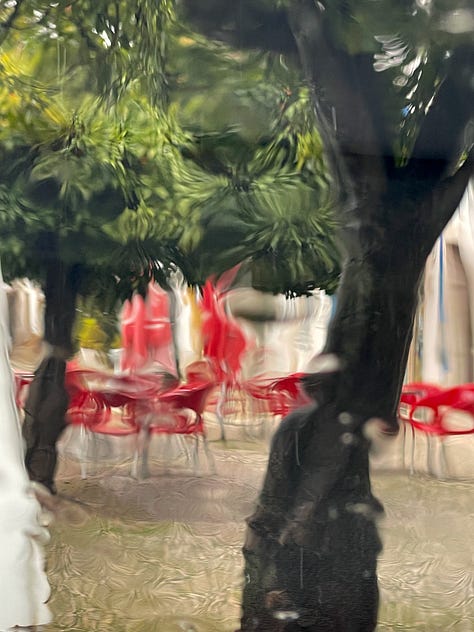
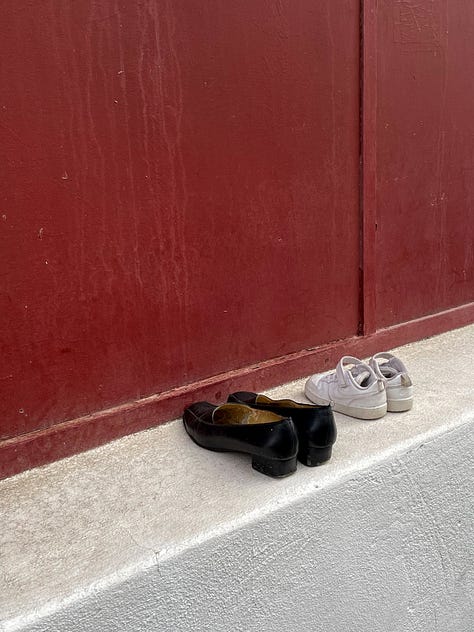


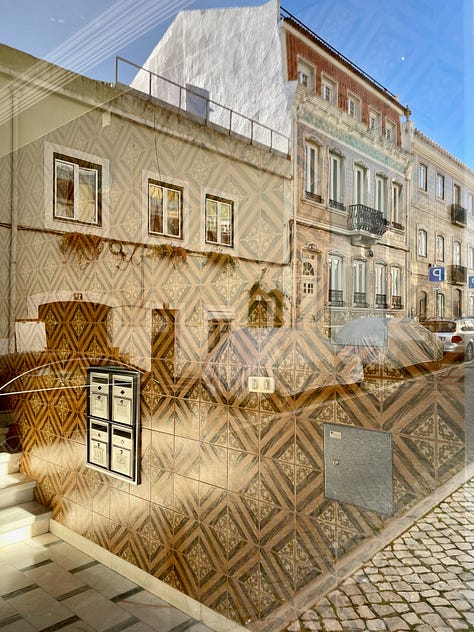
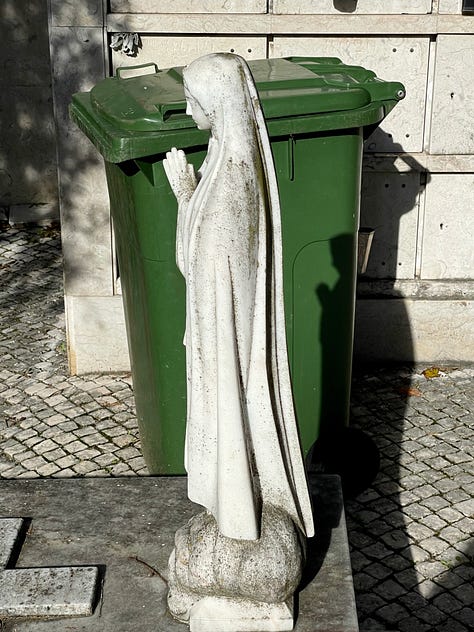
By the way, am I the only one who sees a mermaid in the egg dropped on the pavement?
Evocation of complex emotions
Finally, we get to the most interesting element of non-canonical beauty, which is that such images tend to produce complex or difficult emotions, rather than happy ones. This can combine with the other elements, such as disorder and ambiguity: If a restaurant is empty, what does that mean? Is it failing, or is it just early in the day? If furniture and paintings are lying on the sidewalk, is someone moving, or have they been discarded?

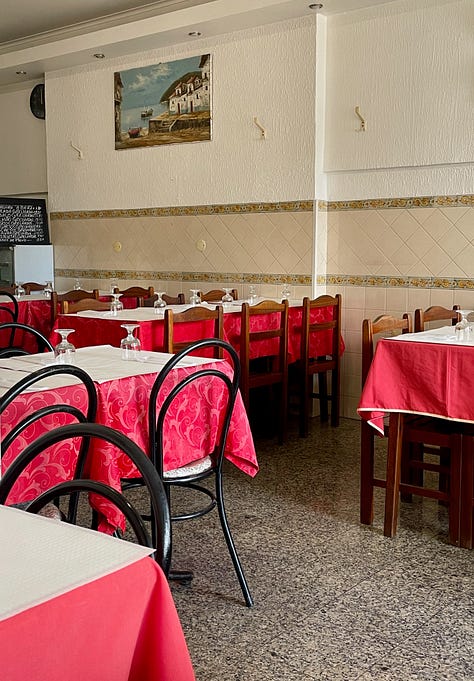

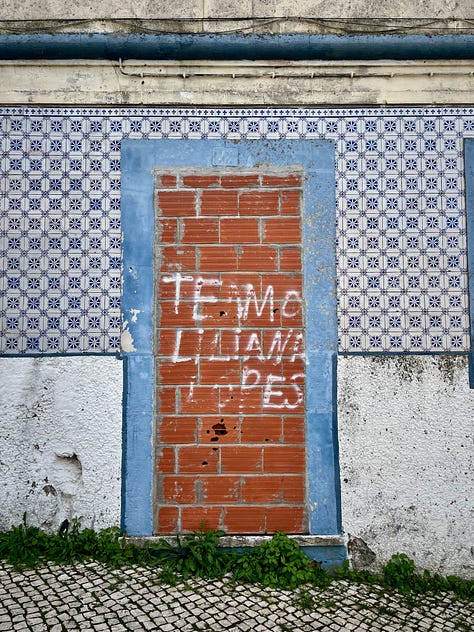
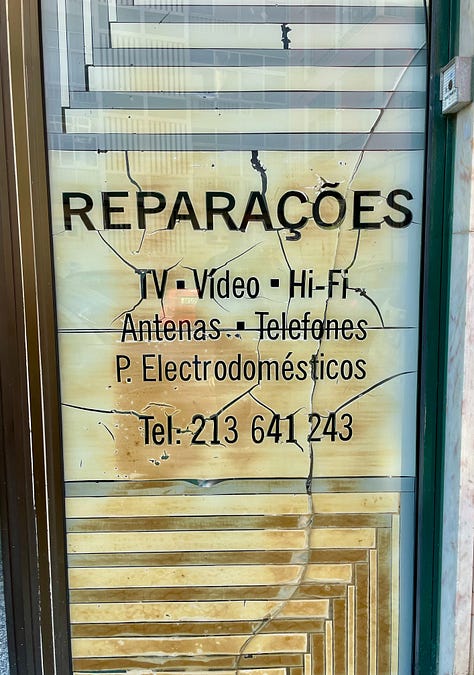
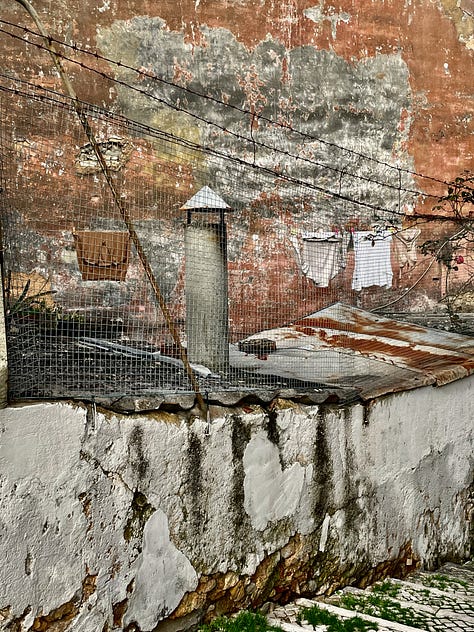
Sometimes language can enter the picture. The bricked-up doorway says, “I love you, Liliana Lopes.” And the cracked and weathered storefront announces repairs of home appliances and hi-fi systems.
Putting it all together
The best examples of non-canonical beauty will marry many of these elements in a way that leaves me feeling intensely satisfied, like a rich dessert followed by coffee. I will leave you with one scene that I walk past frequently in my neighborhood; it always stops me in my tracks, because I find it so irresistible. I have, naturally, taken many photos of it. Here is one:
There is grass here, but no flowers, no children, no champagne, no happy couple sharing a bicycle. It’s just humble buildings. But the colors! The light! The reflections on the wall! The way that the intense simplicity of the sky and the grass bracket the complex pattern of the rooftops! All of this fills me with joy—which is not always how one feels while walking uphill with heavy groceries.
Why does this matter?
Perhaps you don’t see the same beauty in these images that I do. That’s perfectly fine. What I am hoping to do, ultimately, is to challenge you to think about and develop your own ideas about what is beautiful. The thesis that I developed in “The Beauty of Elsewhere, the Beauty of Home” is that it is possible to learn to see beauty where we have never seen it before, or where we have lost the habit of seeing it.
As I mentioned in “Living Abroad Changed Me as a Person”, living in Europe, where the built environment is designed with aesthetic considerations in mind to a greater extent than in my native USA, has helped to foster my awareness of beauty. But in fact, I believe that everyone can become sensitized to beauty—and the more sensitive our receptors become, the more beauty we find. It’s there for the taking: in puddles, in walls, in trash. We just have to see it.
So my wish for you is that you will start to see even more beauty in the world around you, and that that will bring you joy.
Maybe I’ll see you down by the abandoned warehouse.
Question for you: If you had to choose one of these images as your favorite, which would it be?
Photographer joke: “Non-Canonical pictures are ones you take with a Nikon.”








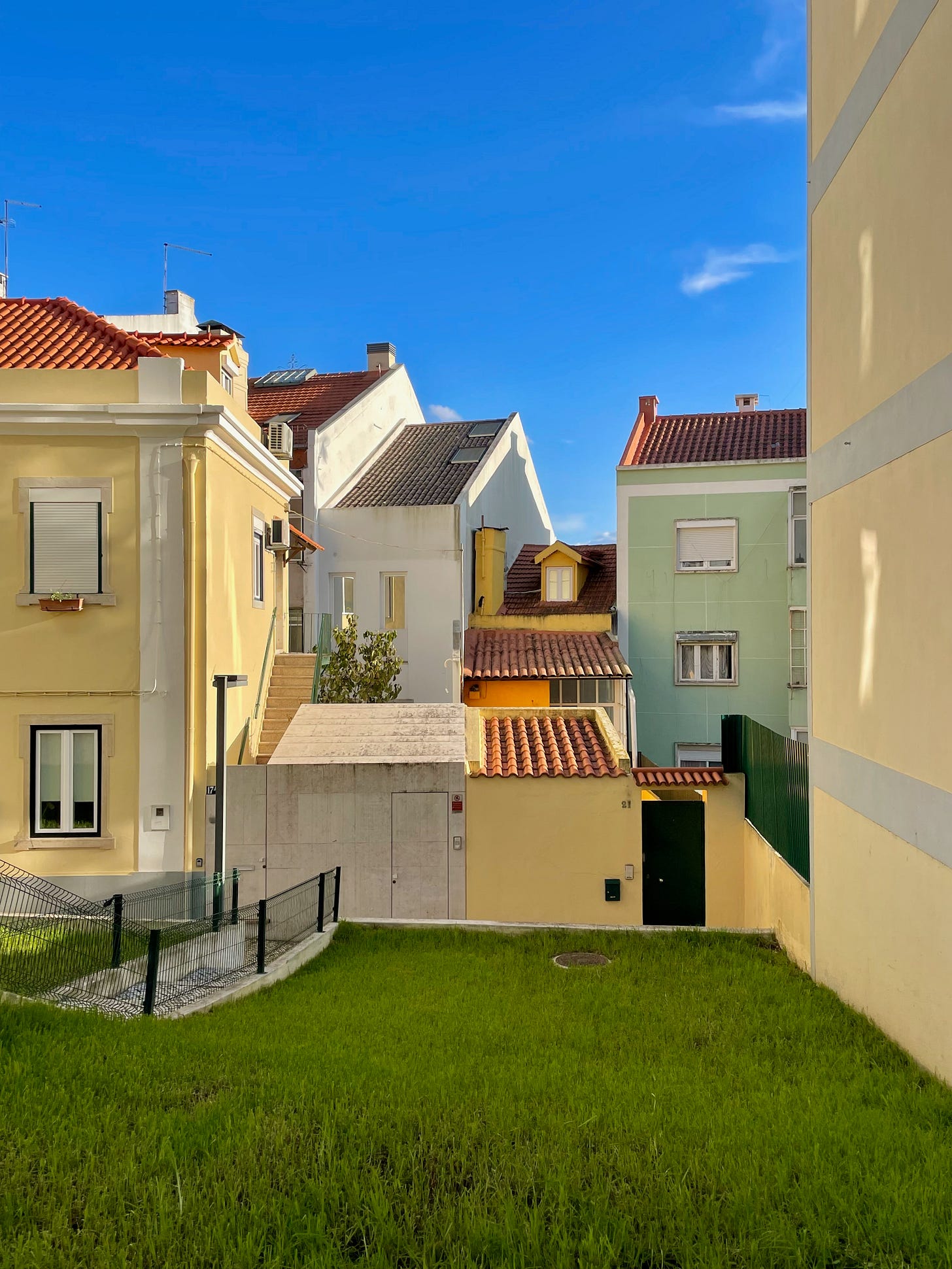
I so appreciate this thoughtful and thought-provoking piece. I also read the companion one, and totally agree that it’s too easy to become blind to the “beauty of home.” This piece drew me in because beauty is one of my core values. I haven’t thought about it so methodically as this and can predict that I will carry this heightened perception into my day. Further insights are likely. For now, I’d like to push back on your theory that canonical beauty elicits mild emotion. What about Picasso’s Guernica? Or a Hopper painting, like Hotel Room, 1931? Is the Pantheon in Rome canonical? It’s also sublime, which is not a mild reaction. Last thought - the sublime in a painting like Albert Bierstadt’s “A Storm in the Rocky Mountains,” 1866?
Wow! This is why I love Marseille which I’ve heard it compared to Lisbon. Yes I love beautiful cities like Paris but I also love having to peer more closely and spend time looking for beauty. Thank you for sharing your piece.